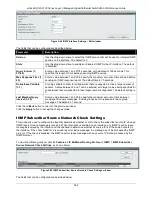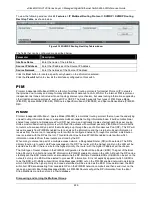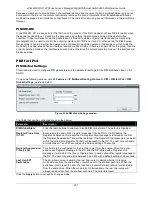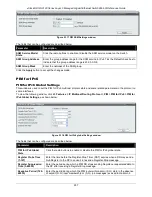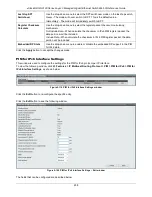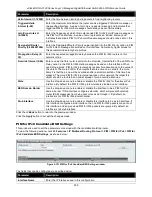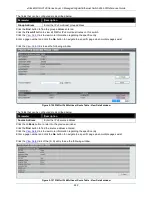
xStack® DGS-3120 Series Layer 3 Managed Gigabit Ethernet Switch Web UI Reference Guide
230
Although Hello packets discover PIM-SM routers, these routers can only join or be “pruned” from a multicast group
through the use of Join/Prune Messages exchanged between the DR and RP. Join/Prune Messages are packets
relayed between routers that effectively state which interfaces are, or are not to be receiving multicast data. These
messages can be configured for their frequency to be sent out on the network and are only valid to routers if a
Hello packet has first been received. A Hello packet will simply state that the router is present and ready to become
a part of the RP’s distribution tree. Once a router has accepted a member of the IGMP group and it is PIM-SM
enabled, the interested router will then send an explicit Join/Prune message to the RP, which will in turn route
multicast data from the source to the interested router, resulting in a unidirectional distribution tree for the group.
Multicast packets are then sent out to all nodes on this tree. Once a prune message has been received for a router
that is a member of the RP’s distribution tree, the router will drop the interface from its distribution tree.
Distribution Trees
Two types of distribution trees can exist within the PIM-SM protocol, a Rendezvous-Point Tree (RPT) and a
Shortest Path Tree (SPT). The RP will send out specific multicast data that it receives from the source to all
outgoing interfaces enabled to receive multicast data. Yet, once a router has determined the location of its source,
an SPT can be created, eliminating hops between the source and the destination, such as the RP. This can be
configured by the switch administrator by setting the multicast data rate threshold. Once the threshold has been
passed, the data path will switch to the SPT. Therefore, a closer link can be created between the source and
destination, eliminating hops previously used and shortening the time a multicast packet is sent from the source to
its final destination.
Register and Register-stop Messages
Multicast sources do not always join the intended receiver group. The first hop router (DR) can send multicast data
without being the member of a group or having a designated source, which essentially means it has no information
about how to relay this information to the RP distribution tree. This problem is alleviated through Register and
Register-Stop messages. The first multicast packet received by the DR is encapsulated and sent on to the RP,
which in turn removes the encapsulation and sends the packet on down the RP distribution tree. When the route
has been established, a SPT can be created to directly connect routers to the source, or the multicast traffic flow
can begin, traveling from the DR to the RP. When the latter occurs, the same packet may be sent twice, one type
encapsulated, one not. The RP will detect this flaw and then return a Register-stop message to the DR requesting
it to discontinue sending encapsulated packets.
Assert Messages
At times on the PIM-SM enabled network, parallel paths are created from source to receiver, meaning some
receivers will receive the same multicast packets twice. To improve this situation, Assert messages are sent from
the receiving device to both multicast sources to determine which single router will send the receiver the necessary
multicast data. The source with the shortest metric (hop count) will be elected as the primary multicast source. This
metric value is included within the Assert message.
PIM-SSM
The Source Specific Multicast (SSM) feature is an extension of IP multicast where datagram traffic is forwarded to
receivers from only those multicast sources to which the receivers have explicitly joined. For multicast groups in
SSM range, only source-specific multicast distribution trees (no shared trees) are created.
The Internet Assigned Numbers Authority (IANA) has reserved the address range from 232.0.0.0 to
232.255.255.255 for SSM applications and protocols. The Switch allows SSM configuration for an arbitrary subset
of the IP multicast address range from 224.0.0.0 to 239.255.255.255.
PIM-DM
The Protocol Independent Multicast - Dense Mode (PIM-DM) protocol should be used in networks with a low delay
(low latency) and high bandwidth as PIM-DM is optimized to guarantee delivery of multicast packets, not to reduce
overhead.
The PIM-DM multicast routing protocol is assumes that all downstream routers want to receive multicast messages
and relies upon explicit prune messages from downstream routers to remove branches from the multicast delivery
tree that do not contain multicast group members.
PIM-DM has no explicit ‘join’ messages. It relies upon periodic flooding of multicast messages to all interfaces and
then either waiting for a timer to expire (the Join/Prune Interval) or for the downstream routers to transmit explicit
‘prune’ messages indicating that there are no multicast members on their respective branches. PIM-DM then
removes these branches (‘prunes’ them) from the multicast delivery tree.
Содержание xStack DGS-3120 Series
Страница 1: ......







